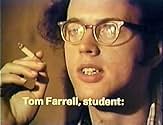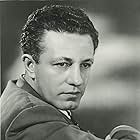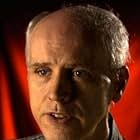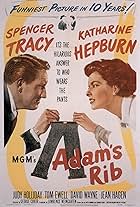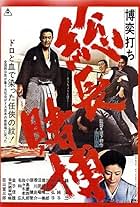A portrait of legendary filmmaker Nicholas Ray while is working as a film professor at a college in upstate New York.A portrait of legendary filmmaker Nicholas Ray while is working as a film professor at a college in upstate New York.A portrait of legendary filmmaker Nicholas Ray while is working as a film professor at a college in upstate New York.
Photos
- Director
- Writers
- All cast & crew
- Production, box office & more at IMDbPro
Storyline
Did you know
- TriviaThe scenes of Nick Ray directing scenes from "We Can't Go Home Again" were filmed at his rented farmhouse in Vestal, New York in March 1973, and at the Maxwell Anderson Theatre in New York City in January 1974.
- ConnectionsFeatured in American Masters: James Dean: Sense Memories (2005)
Featured review
This rarely seen documentary of legendary filmmaker Nicholas Ray, the mastermind behind seminal American films such as "Rebel Without a Cause" and "Johnny Guitar," centers around the director's work as a film professor in an upstate New York college.
Ray, rumpled, pale and sickly, but rarely seen here without a cigarette (or a fascinating anecdote) dangling from his lips, guides a group of students through what is perhaps best described as a "collective directing process."
Veteran actor Howard DaSilva narrates, reading analysis over clips of some of the most intense scenes of Ray's films, highlighting the fairly unique humanist nature of the director's oeuvre.
While at the time this documentary was made, Ray's collaborative work as a professor may have been laudable, and in keeping with the free-thinking, idealistic ethos of the early 70s (and, as we are told, something he may have been driven to by his disillusionment with the Hollywood system) but now the "process" shown here is as dated as a rusty VW Microbus, almost shockingly so, and certainly a little sad.
Ray is barely eking out (what we are told will be) a feature film with kids, who are handling all phases of the production. Shooting in the mud, darkness, and cold, with a shoestring budget, the sight of hippie "creative partners" fumbling with a line of trite dialogue, or arguing vehemently with Ray -- interspersed with clips of his work with some of the greatest stars (James Dean, Joan Crawford, Humphrey Bogart) in some of the most affecting films of the generation -- is jarring.
Director Francois Truffaut and actor John Houseman (as well as the clips) come to the rescue at intervals; they offer eloquent descriptions of Ray's powerful gifts, and, which despite the decidedly downward cast of his situation at the time of the documentary, are ultimately echoed by Ray's insight to his students and the crew that is following him.
While "I'm A Stranger Here Myself" (perhaps thankfully) almost completely avoids any close discussion of the problems that Ray faced neared the end of his life, whatever lack of concrete analysis exists is virtually obviated by the the intensity of Ray's physical and mental condition. All we really need to know comes through with almost the same pathos of Ray's earlier cinematic works. Nicholas Ray is suffering, dying perhaps, but isn't giving up.
While it can be argued that a man of his talents is deserving of a brighter cinematic eulogy, "Stranger," if you can find it, is not to be missed by fans of his work.
Ray, rumpled, pale and sickly, but rarely seen here without a cigarette (or a fascinating anecdote) dangling from his lips, guides a group of students through what is perhaps best described as a "collective directing process."
Veteran actor Howard DaSilva narrates, reading analysis over clips of some of the most intense scenes of Ray's films, highlighting the fairly unique humanist nature of the director's oeuvre.
While at the time this documentary was made, Ray's collaborative work as a professor may have been laudable, and in keeping with the free-thinking, idealistic ethos of the early 70s (and, as we are told, something he may have been driven to by his disillusionment with the Hollywood system) but now the "process" shown here is as dated as a rusty VW Microbus, almost shockingly so, and certainly a little sad.
Ray is barely eking out (what we are told will be) a feature film with kids, who are handling all phases of the production. Shooting in the mud, darkness, and cold, with a shoestring budget, the sight of hippie "creative partners" fumbling with a line of trite dialogue, or arguing vehemently with Ray -- interspersed with clips of his work with some of the greatest stars (James Dean, Joan Crawford, Humphrey Bogart) in some of the most affecting films of the generation -- is jarring.
Director Francois Truffaut and actor John Houseman (as well as the clips) come to the rescue at intervals; they offer eloquent descriptions of Ray's powerful gifts, and, which despite the decidedly downward cast of his situation at the time of the documentary, are ultimately echoed by Ray's insight to his students and the crew that is following him.
While "I'm A Stranger Here Myself" (perhaps thankfully) almost completely avoids any close discussion of the problems that Ray faced neared the end of his life, whatever lack of concrete analysis exists is virtually obviated by the the intensity of Ray's physical and mental condition. All we really need to know comes through with almost the same pathos of Ray's earlier cinematic works. Nicholas Ray is suffering, dying perhaps, but isn't giving up.
While it can be argued that a man of his talents is deserving of a brighter cinematic eulogy, "Stranger," if you can find it, is not to be missed by fans of his work.
Details
- Runtime1 hour
- Sound mix
- Aspect ratio
- 1.37 : 1
Contribute to this page
Suggest an edit or add missing content

Top Gap
By what name was I'm a Stranger Here Myself (1974) officially released in Canada in English?
Answer
